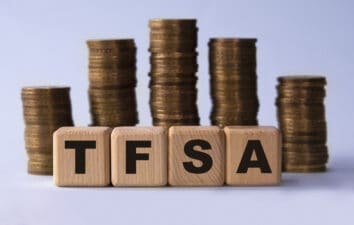Manulife Financial (TSX:MFC) and Sun Life (TSX:SLF) are both life and health insurance companies. The dividend stocks offer decent dividend income that tends to grow over time. Let’s explore which may be a better buy today.
Business overview
Manulife has a greater focus in Asia. For example, in the first quarter, about 32% of its core earnings came from Asia, 25% was from the United States, 23% was from Canada, and 19% was from global wealth and asset management. It has about $814 billion of assets under management and administration.
Sun Life has about 85 million clients with approximately 1.36 trillion of assets under management. It has a well-balanced and diversified business — about 41% of which is in wealth and asset management, 30% is in group health and protection, and 29% is in individual protection. In the first quarter, it earned about 32% of its net income from Canada, 24% from the United States, 15% from Asia, and 29% from asset management.
Dividends
Manulife is a Canadian Dividend Aristocrat with a five-year dividend-growth rate of 10.0%. At writing, it offers a dividend yield of 5.6%. Its payout ratio is estimated to be sustainable at about 46% of its adjusted earnings this year.
Sun Life is also a Canadian Dividend Aristocrat with a five-year dividend-growth rate of 9.6%. At writing, it offers a dividend yield of 4.3%. Its payout ratio is estimated to be sustainable at about 47% of its adjusted earnings this year.
Earnings and returns track record
In the past 10 years, Manulife increased its adjusted earnings per share (EPS) at a compound annual growth rate (CAGR) of 10.7% per year. In this period, it raised its dividend at a CAGR of close to 9.8%. Its total return in the last 10 years was about 6.8% per year as it experienced valuation compression — going from a price-to-earnings ratio (P/E) of about 14.7 to 8.1.
In the past 10 years, Sun Life increased its adjusted EPS at a CAGR of close to 8.3% per year. In this period, it also increased its dividend at a CAGR of 6.7%. Its dividend and earnings growth, which drove price appreciation, led to total returns of about 11.7% per year in the last 10 years. Sun Life experienced little valuation compression (from a P/E of about 12.1 to 11) compared to Manulife.
Which is better buy today?
At $25.91 per share at writing, Manulife stock trades at about 8.1 times adjusted earnings, which appears to be undervalued for its growth potential. Analysts are expecting EPS growth of 7.4% per year over the next three to five years. Assuming valuation expansion to nine to 10.6 times over the next three to five years, MFC stock can deliver total returns of 14-17% over the next five years.
At $69.35 per share at writing, Sun Life stock trades at about 11 times adjusted earnings, which is a fair multiple for the stock. Management set medium-term targets: EPS growth of 8-10% per year, return on equity of 18% or higher, and dividend payout ratio of 40-50%. Analysts are even more conservative as they expect the insurance company to grow its EPS by about 7% per year over the next three to five years. Assuming no valuation expansion, SLF can deliver total returns of more or less 11.3% over this period.
SLF stock has outperformed MFC in total returns in the last one, five, and 10 years. Investors looking for a resilient name that can allow them to sleep better at night can consider Sun Life stock. However, Manulife could be trading at a bargain. It can deliver outsized returns over the next five years with solid earnings growth and even just partial valuation expansion.







